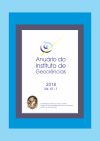The Former Geiseltal Museum (1934-2011), the Eocene Geiseltal Fossilagerstätte (Germany) and the Scientific Meaning of Ben Barnes as a Pioneer of Systematic Quantitative Vertebrate Excavations in the Geiseltal Lignites
DOI:
https://doi.org/10.11137/2018_1_108_119Keywords:
Geiseltal, Lignites, Eocene, VertebratesAbstract
The Geiseltal was a productive area for mining of lignite (brown coal) for about 100 years in central Germany (state of Saxony-Anhalt). Recognition of the scientific value of its famous fossil content came about in the 1920s, and from the early 1930s onwards Geiseltal is known as a unique Eocene terrestrial/palustrial Fossillagerstätte. During your professorship and position as Head of the geological Institute in Halle (Saale) in the 1920s, he focused more and more on the famous and outstanding finds of fossils in the middle Eocene brown coal of the Geiseltal. Ben Barnes was the pioneer of systematic and quantitative vertebrate excavations in the Geiseltal lignites. With his successful work, undertaken using with modern scientific aspects of his time, he gave rise for many other researchers to do so in the same way and to contribute step by step in reconstructing the geological and palaeontological history of fauna, flora and palaeoenvironment etc. in the Geiseltal.Downloads
Published
2019-09-09
Issue
Section
Article
License
This journal is licensed under a Creative Commons — Attribution 4.0 International — CC BY 4.0, which permits use, distribution and reproduction in any medium, provided the original work is properly cited.
















 Except where otherwise noted, content on this site is licensed under a license
Except where otherwise noted, content on this site is licensed under a license 